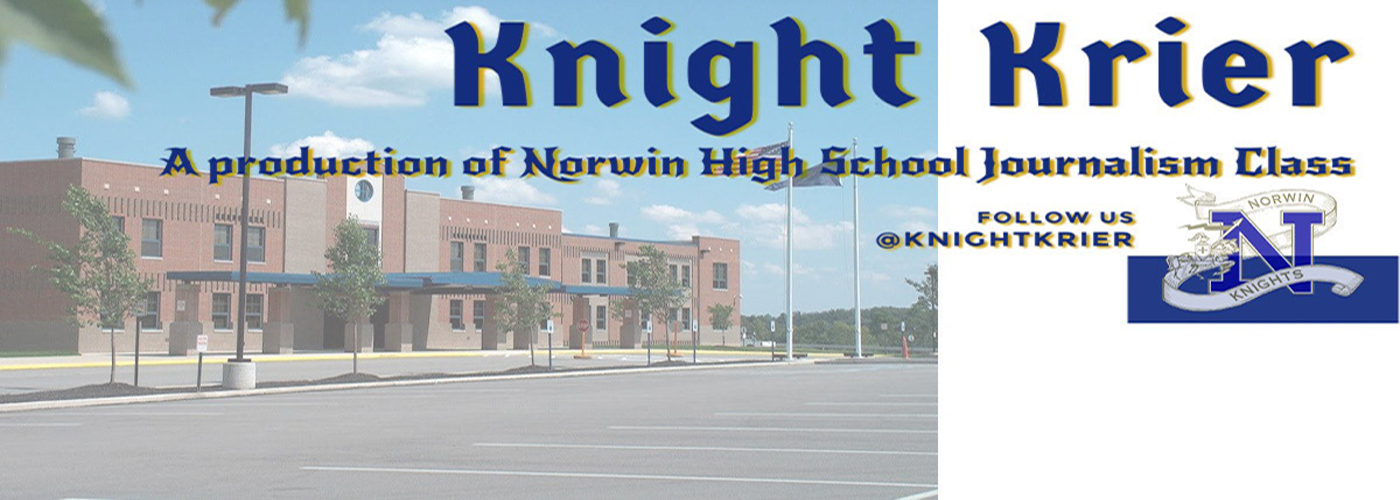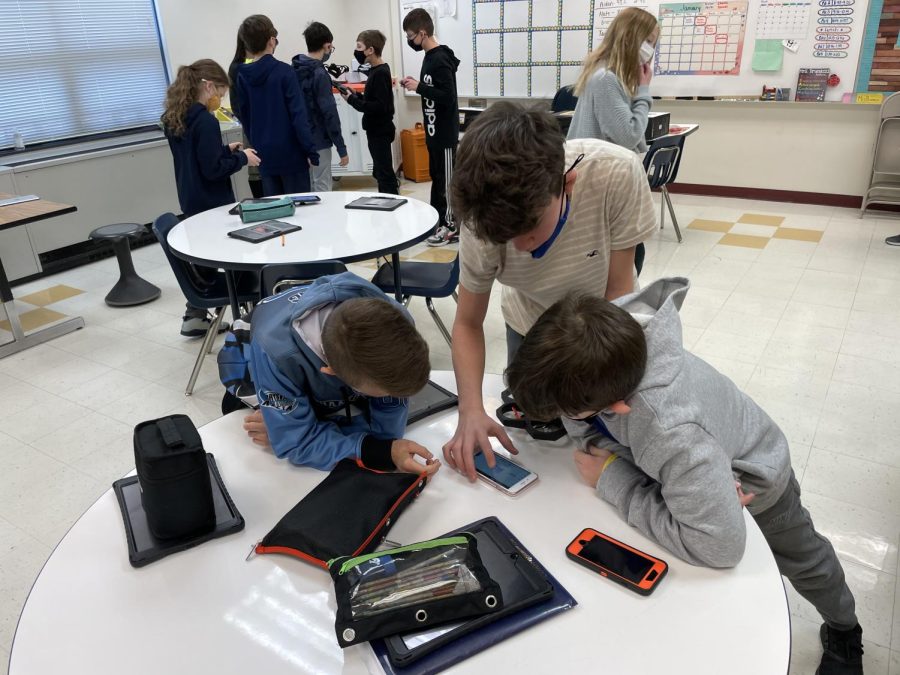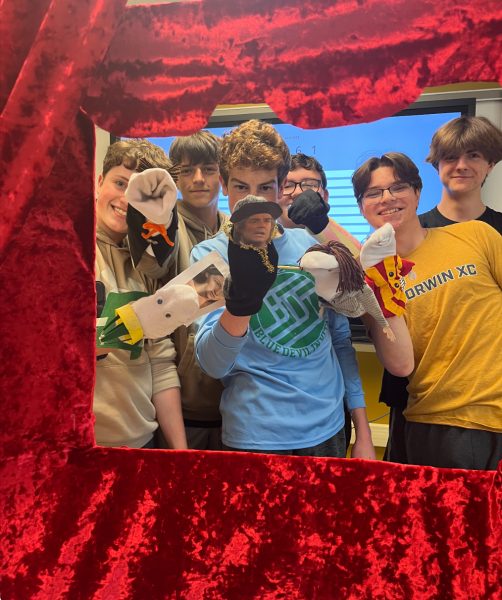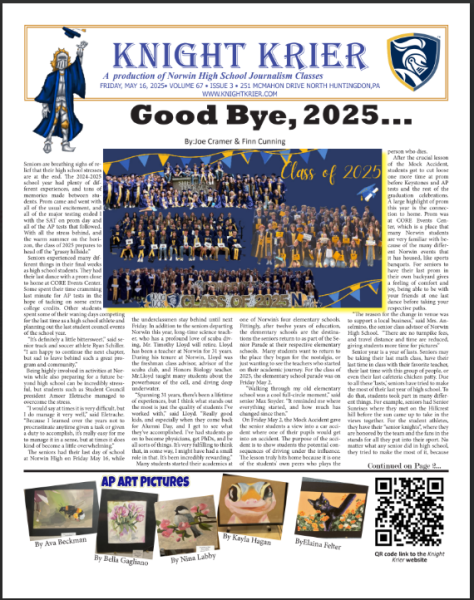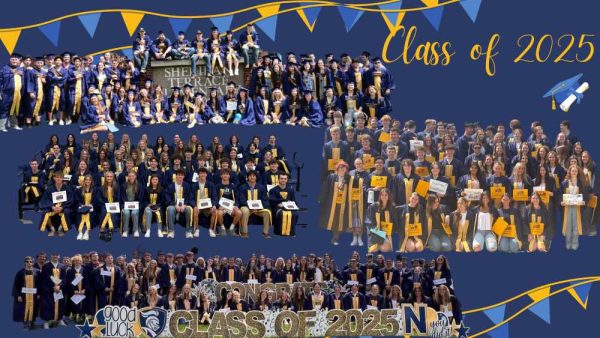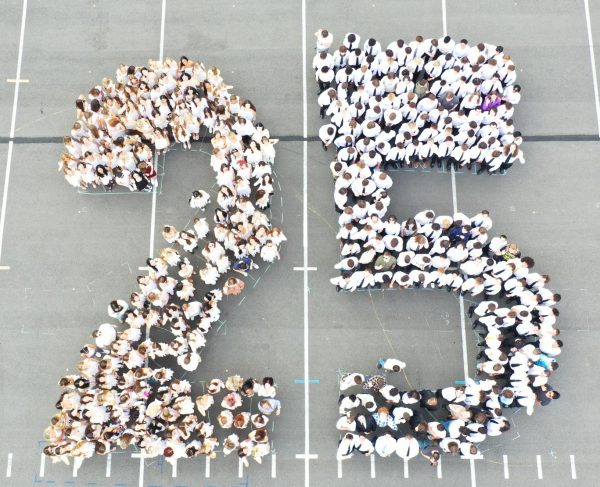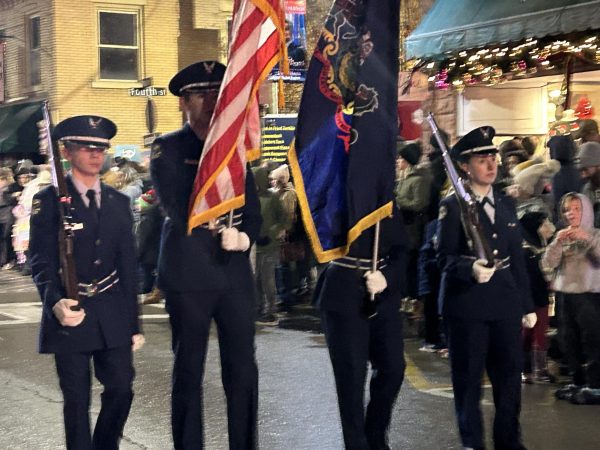Taking off: Hillcrest gifted students program drones
Accessibility to drones has increased significantly in the past decade. No longer are drones just used for military purposes or toys for rich kids, but for educational purposes to learn about aeronautical engineering and coding.
Students at Hillcrest Intermediate School enrolled in the gifted program were given the opportunity to program drones to complete an obstacle course. The newly implemented coding drones took off with students, and are looking to stick around in the building.
“This is my first year doing drones in school,” Hillcrest gifted coordinator and SEAL teacher Mrs. Trisha Brunazzi said. “I’ve done drones at home and played with my son’s toy remote control drones, but I’ve never done drones in the classroom, and I definitely never coded drones, and that was the big difference when we tried these ones.”
Brunazzi felt that utilizing drones in the classroom was a good way to open up gifted students to problem solving and critical thinking, regardless of where their talents and interests lie.
“It ties in with GIEP goals,” Brunazzi said. “It’s only done in the SEAL room right now. We haven’t done it with other classrooms. A lot of the kids have goals, even problem solving and critical thinking goals, that fit well into coding. So a lot of them, even if they don’t have a specific coding goal, we want them to get better at being problem solvers. We want them to learn how to code. But every single kid did it. Nobody said they didn’t want to try it.”
The drones, produced by the company Airblock, were DIY, and enabled the students to learn the individual components of the drones, and how the parts work in conjunction with one another. Utilizing the iPads granted by the school, the students were able to program the drones with the app Makeblock.
“I’ve heard of it a lot, especially with other STEM teachers in the county,” Brunazzi said. “A lot of gifted teachers have mentioned drones and Dr. Taylor has mentioned wanting drones for our building and I’ve just heard about it everywhere. I reached out to the Westmoreland Intermediate Unit for some resources, and they lend us the drones. They have a lending library, so they lend STEM materials to schools in Westmoreland County. So when I reached out to the I.U. and I asked, ‘What drones do you recommend?’ they gave me a couple of recommendations and said, ‘We have these specific ones in our lending library if you want us to loan them to you for a couple weeks and you can try them.’”
The ultimate goal with the drones is for every kid at Hillcrest to have the opportunity to code drones. The new drones the district is looking at will run off of JavaScript, Python, as well as the drag-and-drop program, Scratch. These new drones would also involve a more complex DIY component, with students having not only building but wiring the drones together.
“It was definitely to pursue coding,” Brunazzi said. “Those drones can run on just a remote. Left, right, up, down, forward, back. The first day I said, ‘I’m not here to let you play with a remote control. Everybody can do that at home. We’re here to learn to give the directions to the drone and problem solve until we get it to do what we want to do.’ So that’s what the hoops are for. It was like an obstacle course. That was how we set it up. They had to start on the floor and see for how many seconds they had to rise it up and how many seconds they had to fly forward and then hover for so many seconds before it did a trick. We had some stepping up and going through two. We had some classes build a separate obstacle out of styrofoam and it would fly through there. So the main purpose was to learn how to code, and then hopefully if we get more drones for Hillcrest more kids can have their hands on these, not just the gifted. The long-term goal would be for every student to experience it.”
Many of the students found great success in the process of learning to code drones, and also learned about having to keep going even after failure.
“It’s quite hard on some parts but it’s also really easy on other parts,” sixth grader Max Fleckenstein said. “The hardest part was probably the landing material because for the first couple days it would just immediately crash and fall. The easy parts are the moving forward and backward. That was kind of simple. But there were some other hard parts like we kept hitting the ceiling or the fact that you have to calculate how far you have to go and how long you have to hover for. If you tried to do a trick it would be really hard because then you had to account for it just immediately falling.”
More importantly than learning about how to code, was for the students to learn how to work together.
“We had to respect everybody’s ideas because one person wanted to do one thing while another person did something else,” sixth grader Alex Sacunas said. “We had to find a compromise.”
The “drone race” started a spark of competition in the gifted students, and even inspired some students to pursue coding further.
“My favorite part was how it was like a race to see who could get it first and who could do the trick and then land it,” sixth grader Aubrey Traill said. “On some teams it was a 50/50 chance if it would go through and actually do it or go straight up to the ceiling. For me, I was never into coding but this made me realize how easy it was and how much fun it was.”
The students thoroughly enjoyed their coding experience, and are eager to continue learning with their friends.
“The most fun part for me was when I actually got the drone with my group to go through one of the hoops,” Sacunas said. “It was really fun because we had to figure out how to get it to land.”
As these students begin to transition to the middle school and high school, and Hillcrest implements drone coding for all of its students, future interest in programming, coding and engineering will surely take off.
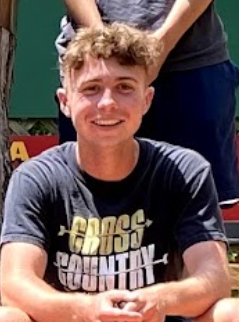
Max is a second year writer for the Knight Krier. He is a senior at Norwin High School who, in addition to the school newspaper, is involved in cross...

